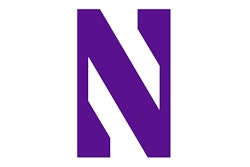The last time Lambeau Field in Green Bay, Wis., underwent a major renovation, the look of the stadium - whose bared-scaffolding-and-bleacher simplicity often prompted TV color analyst John Madden to proclaim it a shrine to the NFL
 FROM THE ROOFTOPS Evenly distributed loudspeakers have eliminated echo issues at Lambeau Field. (Photo courtesy of the Green Bay Packers)
FROM THE ROOFTOPS Evenly distributed loudspeakers have eliminated echo issues at Lambeau Field. (Photo courtesy of the Green Bay Packers)The last time Lambeau Field in Green Bay, Wis., underwent a major renovation, the look of the stadium - whose bared-scaffolding-and-bleacher simplicity often prompted TV color analyst John Madden to proclaim it a shrine to the NFL - was significantly altered by the addition of a massive brick atrium along one side. Ten years later, the Packers are in the midst of a three-year "construction and technology refresh," in the words of their technology manager Wayne Wichlacz. But before the team tackled the installation of new video boards and Lambeau's first-ever second deck (set to debut next season), it addressed something that is often an afterthought in outdoor sports venues: sound.
Lambeau - a traditional bowl except that it's completely walled in at its rim by multistoried luxury suites and, until last year, featured a single-point-source sound system at one end - had for too long functioned acoustically as an open-air echo chamber. "If you stood in the north end zone, you'd hear the sound as it traveled over you. It went to the south end zone, hit against our old scoreboard and bounced back," Wichlacz says. "You basically could hear everything twice."
Not anymore.
The first phase of Lambeau Field's current renovation involved a multimillion-dollar investment in a distributed sound system, with dozens of speakers placed around the entire perimeter of the suite wall's rooftop. Cabinets packed with audio components each send a cone of sound out over the crowd, with smaller so-called down-fill speakers placed in between. "As sound comes out of the loudspeaker, it doesn't make a perfect 180-degree cone - you wouldn't want it to - and, in the case of Lambeau, it's like a 60-degree cone," says Mike Hedden, founder and CEO of Gainesville, Ga.-based Danley Sound Labs, the six-year-old company that supplied the Packers with their stadium audio hardware. "The down-fills cover the gaps that are up really close between cones. If your seat is one being covered by down-fills, your back is almost against the vertical wall of the luxury boxes."
 PHILLY PHONETICS Six hundred speakers, including those mounted on upper-deck fascias, comprise the distributed sound system at Citizens Bank Park. (Photo courtesy of Community Professional Loudspeakers)
PHILLY PHONETICS Six hundred speakers, including those mounted on upper-deck fascias, comprise the distributed sound system at Citizens Bank Park. (Photo courtesy of Community Professional Loudspeakers)Outdoor sports facility operators may feel like their backs are up against a wall in terms of providing fans with intelligible sound. They must deal with the sheer size of their venue and its acoustical quirks, as well as varying weather conditions. Each will impact a sound system's design.
"The two primary ways that people try to cover a large stadium are by either stacking a bunch of speakers in a single-source location - in an end zone or on top of a press box- or through a distributed system with smaller speakers that are scattered all around the facility," says Tim Hamilton, senior audio-visual consultant at Acoustics By Design in Grand Rapids, Mich.
In either case, audio components specified for outdoor applications must not only control what gets into them (rain, snow, pests) but what comes out of them, and managing sound in open-air venues presents challenges unheard of in indoor sports applications. Temperature gradients can literally change with the wind and steer sound in any direction in an instant. This is a particular problem during night football games, as cool fall air sits over surface-level air that has been warmed all day by the sun. "The sound coming out of the speakers tends to bend toward the colder air and go right over the top of your bleacher area," Hamilton says, adding that a single-source system, the approach often employed by high schools playing night football, is most susceptible. "If you have a big stack of speakers that are essentially trying to combine together to steer the sound to where the people are seated, as wind blows through that kind of environment it creates these temperature gradients, and it literally pulls that sound up or down or left or right. And so you end up with spots where it's just like the sound totally disappeared. It's gone."
The farther the sound must be thrown, the more chance it has to disappear. Michigan State University didn't abandon its point-source audio design at Spartan Stadium, but it did upgrade its technology prior to this season, placing Danley speakers inside two new video boards in the north end zone. "There were parts of the stadium where people just couldn't hear it," MSU deputy athletic director for facilities Greg Ianni says of the previous system. "The throws to the farther end of the stadium were not strong."
Conversely, the farther the sound must be thrown, the greater the risk of audio spill. "In outdoor venues, you have to cover the entire space, but then you also have to be concerned with all the neighbors that you're going to impact with audio," Hamilton says. "A distributed system is much less susceptible to things like wind and temperature gradients, because your sound waves are not traveling anywhere near as far. And you generate less sound overall, as a general rule, so you don't spill as much sound, because each speaker itself is not being pushed to be as loud."
The inverse square law dictates that, because sound is spreading in multiple directions, its perceived volume diminishes by half whenever the distance between an audio source to its receiver is doubled. "When I move from 500 feet to 1,000, I lose six decibels, or approximately half of the perceived volume of that sound," says Hamilton. "And at 1,000 feet to 2,000, I only lose half again. So, if I have neighbors who are only a quarter-mile away, the sound can still be pretty loud by the time it gets there."
Moisture in the air will absorb high frequency sound, but this is less of a concern, according to Hamilton. "Rain certainly does have an impact on it," he says. "But if rain is coming down in pretty good measure, people aren't that worried about the sound system anymore. Everybody is putting their ponchos on and putting umbrellas up, and if the sound is slightly more muffled because of increased moisture in the air, that's not as big a concern as keeping dry."
 GO LONG New video boards at the north end of Michigan State's Spartan Stadium house speakers that throw sound the full length of the football field and beyond. (Photo courtesy of Michigan State University )
GO LONG New video boards at the north end of Michigan State's Spartan Stadium house speakers that throw sound the full length of the football field and beyond. (Photo courtesy of Michigan State University )Even in ideal weather conditions, sound will never be able to keep up with its video board counterpart - light - in terms of speed of travel. "In a stadium that also has a video scoreboard, you want to synchronize your audio with your video," Hamilton says. "With a distributed system, because your speakers are located much closer to where the people are, your video tends to be in sync much better than it would be in an end zone system. In an end zone system, you can easily get your sound and your video a half-second or more out of sync, and if you're seeing somebody move their lips on screen and the audio's out of sync by a half-second or so, it's very disconcerting and it looks very funny, very fast. If you have video in the venue, that may be a reason to look at a distributed system, as opposed to a point-source system."
"We've worked on venues that seat more than 100,000 people, so it's really difficult to have everybody get the same feeling, because they're spread all over the joint," Hedden says. "You actually delay the video to the boards in such a way that it works for the people about halfway out. You're going to have a little bit of sync error either way, but if you average it out, it's fairly acceptable for most everybody."
But not everybody is capable of such adjustments. "If it's a sophisticated broadcast control room for professional sports, usually they are trying to make some accommodation" for sync error, says John Wiggins, vice president for business development at Community Professional Loudspeakers in Chester, Pa. "If it's a high school football field, there's no attempt."
Volume is another consideration in sound design and operation. "Crowds can generate 105 to 106 decibels," Hedden says. "The sound system can keep up with it. The problem is that for you to have clear or easily intelligible information, you need to be six to 10 decibels louder, which means that sound system, if the crowd is generating 105 or 106, needs to be up at about 112 or 116. That's dangerously loud. So what they do at Lambeau is deliberately wait about three or four seconds before they make any kind of call. The crowd goes crazy and then backs the level down, and when it's 90, 95, then the 105-decibel sound system is fine. Sometimes it goes the other way. You get a dead crowd, and they'll actually take crowd noise and pump it through the sound system to artificially bring the noise floor up. That's all part of the deal, paying attention to the crowd."
Hedden says he has conducted audio demonstrations during which his speakers have, using low frequencies, gotten aluminum bleachers to make their own noise - "zinging," as he puts it - essentially turning empty 85,000-seat stadiums into giant tuning forks. "You hear this fuzzy sort of weird sound, and it's the bleachers literally hovering off the rivets," he says, adding that there's a home-field advantage to this. "When you can feel your seat moving from speakers 900 feet away, it makes you engaged in the venue. What we've done then is given fans an experience that they can't get in their car with its integrated sound system. They don't hear it at home. They sure don't hear it at the commercial movie theater. We've just put them in a place where they're thinking, 'I've never heard audio like this in my life.' "
To the layperson, this may seem potentially destructive - not only to the stadium superstructure, but to individuals' eardrums. Not so, Hedden assures, citing the auditory science of equal-loudness contours. "The more base you've got, you can actually run the overall system lower in volume and still get the desired experience," he says.
Every stadium sound design is as unique as the stadium itself, and each comes with its own considerations. "In a stadium that's completely enclosed all the way around, you're going to get more reflections and that's going to be detrimental at times to intelligibility," Hamilton says. "Stadiums that are open on the end, the sound is going to have more chance to essentially leave the space."
Experts agree that a distributed sound system is often preferable in outdoor sports applications, but not always practical. Not every venue has the resources, or the need, to replicate Atlanta's Turner Field, which Hedden says houses 430 separate loudspeaker boxes. "A lot of it has to do with economics. The economics is easier. The service is easier. That's why it's very convenient to say, 'Let's just put it all in the scoreboard and shoot from one direction,' " he says. "If the money's there, a distributed system is a nice way to go, but it's very expensive to do it well."
If Wichlacz had his design druthers, Lambeau Field would feature a roof canopy over its bleacher seats, allowing sound to be directed from above and in front of at least some fans instead of from behind all of them. "Our human ears are shaped as sound collectors, right? And typically if the sound is coming at you, it's going to be a little bit better experience," he says. "When fans come to experience Lambeau Field, they're only viewing it from their one-seat perspective. Everyone wants the personal audio experience, and in a stadium, your best hope is to get a regional effect."
The second deck will require some audio adjustments in Green Bay next year, but that was to be expected. "Like any large system implementation, we had some challenges last year. We heard about it, and what we did was listen and try to adjust," Wichlacz says. "Part of the challenge of putting this in before all of the construction is done is that we still are tweaking some of the areas in the south end zone, and until we get everything fully online next year, it really isn't the final audio system. People are being patient with us, which is great, but the sound is only going to improve."

































